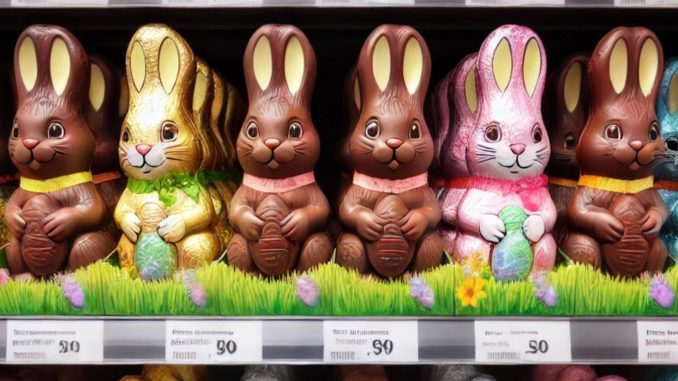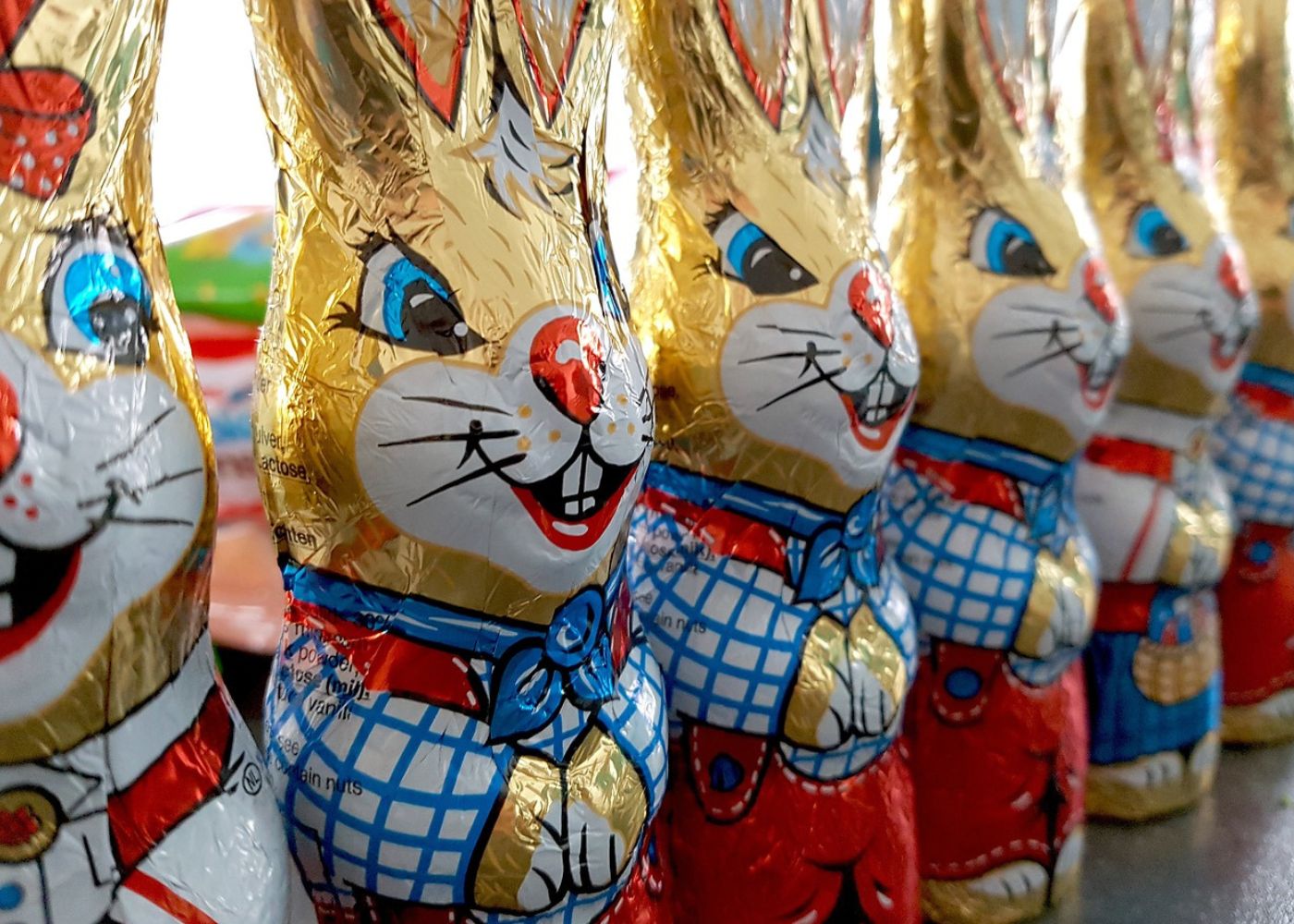
Every year, it’s the same familiar scene: no sooner is Carnival over than supermarket shelves begin to overflow with chocolate Easter bunnies. Not just one, not five but dozens. Some are sitting, some standing, some smile cheerfully, while others stare elegantly into the distance. You’ll find them in milk chocolate, dark chocolate, white chocolate, lactose-free, vegan, or filled. Their names range from Gold Bunny to Schmunzelhase, Vegan Bunny, or simply Easter Bunny.
But why, really? Isn’t one bunny enough? Or maybe two?
The short answer: no – and for several economically interesting reasons. This colorful variety isn’t just charming, it’s also rational. It’s the result of consumer preferences, strategic product policy, and structural characteristics of the market. In this post, we’ll take an economic look beneath the shiny foil of the chocolate bunny.
We Love Variety
In economics, there are two core theoretical approaches to explain consumers’ desire for product variety: the Ideal Variety Approach and the concept of Love of Variety. Both are intuitive but they describe different motives.

According to the Ideal Variety Approach, we all have a mental image of a product that best matches our preferences. The more product variants a market offers, the more likely it is that we’ll find one that comes close to our ideal. At Easter, this might mean one person prefers a dark, elegantly styled bunny, while another wants a large, colorful one with nuts. Variety allows everyone to find something that suits their personal taste.
The second approach goes beyond individual preferences. Love of Variety suggests that we appreciate diversity as such. It’s not just about finding the one perfect product, but about novelty, experience, and symbolism. We don’t buy one chocolate bunny, we buy several, because it’s fun to try different things and to give something special to different people. A classic Gold Bunny for a partner, a funny Schmunzelhase for the kids, and maybe a slightly boozy one for the grandparents. Variety doesn’t just generate individual utility, it also serves social rituals, symbolic meanings, and aesthetic expectations.
Firms Need Variety
So much for the consumer side. But why do companies go along with this? Wouldn’t it be easier – and cheaper – to just offer a standard bunny?
The answer lies in market structure. The chocolate bunny market at Easter is a textbook case of a differentiated oligopoly: a few large suppliers (e.g. Lindt, Ferrero, or Nestlé) dominate the market and they compete less on price than on product features.
Let’s imagine all chocolate bunnies were identical: same size, same chocolate, same packaging. If Lindt sold its bunny for €3.00 and Ferrero offered the same for €2.90, we’d naturally choose the cheaper one – why pay more than necessary? The higher price would be immediately uncompetitive. Lindt would have to lower its price to €2.89 and Ferrero would respond. This undercutting would continue until the price just covers production costs and no further. In economics, this is known as the Bertrand Paradox, which shows that pure price competition with homogeneous products is ruinous for firms.

That’s precisely why companies strive to make their products unique. Through clever product differentiation – design, packaging, flavor, branding, or advertising – they transform what is essentially a homogeneous good (chocolate in bunny form) into an emotionally charged, individually meaningful product.
Lindt’s Gold Bunny is a good example: it’s not cheaper than others but quite the opposite. However, it’s associated with quality, tradition, and exclusivity. This differentiation acts as a shield against price competition. Many consumers no longer compare prices alone, but also consider the brand image, tradition, or packaging and willingly pay more.
In this way, producers escape the Bertrand trap and manage to earn solid margins even in a tightly contested market.
A Toast to Variety!
The colorful world of Easter chocolate bunnies isn’t just sweet, it’s also educational. It shows how companies in oligopolistic markets can protect profits through differentiation and how we as consumers partly benefit (even if it’s not cheap).
Here, variety isn’t excess, it’s a market equilibrium between strategic supply and diverse preferences. And perhaps that’s also a small metaphor for Easter itself: it’s not about finding the one right thing but about celebrating coexistence in diversity.
With that in mind: Happy Easter and good luck choosing your bunny!




